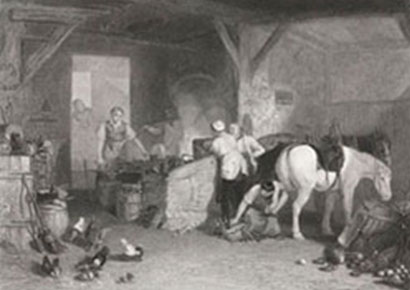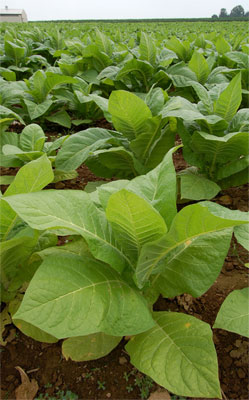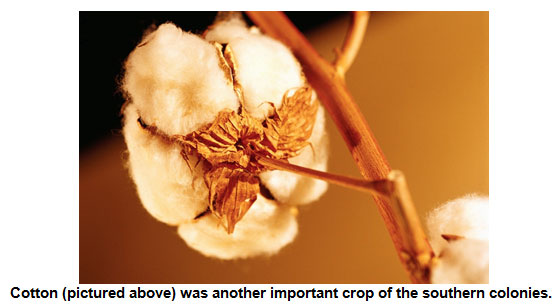
Source: 1800 Farm Economy, Agriculture in the Classroom
The economy of the colonial era was based on small, self-sufficient farming where most colonists farmed the land in which they lived and raised crops for their own consumption. As colonists began to move into the colonies, they built homes and farms. Farms near water transportation grew some cash crops for the purpose of trade.

Source: 1800 Farm Economy, Agriculture in the Classroom
One of the most important crops of the colonial era was tobacco. The economy of the Virginia colony was based primarily on the tobacco crop. Tobacco became very popular in England which caused an increase in demand. This was the first introduction of free enterprise into the colonial economy; farmers were beginning to make a profit from the crops they grew.

Source: Nicotiana Tobacco Plants 1909, RamMan, Wikimedia Commons
The economy of each colonial region varied based on the needs of that region and the resources. For example, the economy of a port city would be based on fishing, shipbuilding, and other businesses related to such an area.

Although products and services varied from one colony to another, there were some economic characteristics that were the same throughout the colonies. The 13 English colonies were controlled by the English government, which did not allow the colonists to vote or elect representatives in the colonies. Additionally, the colonists were required to pay taxes to the English government.